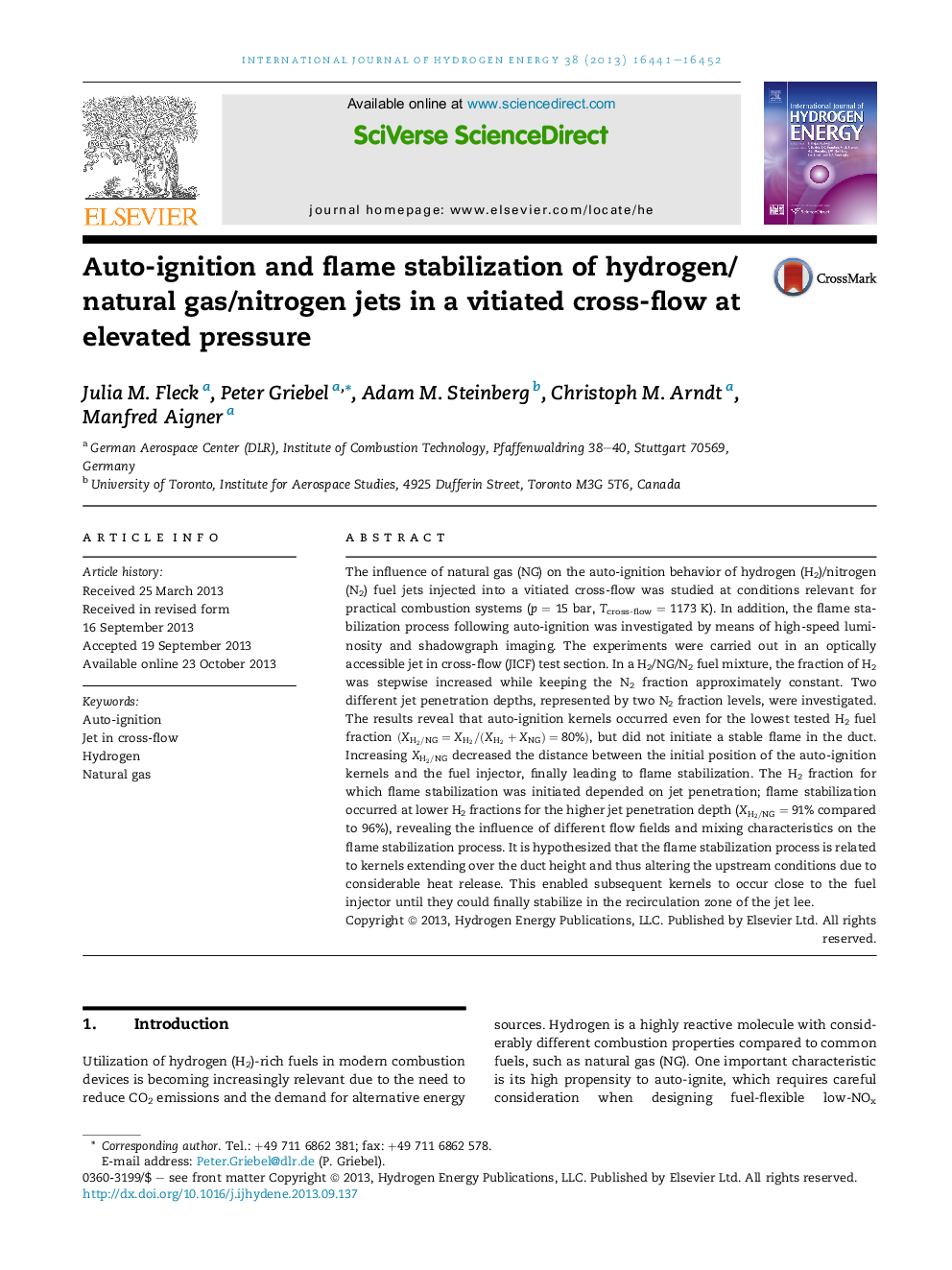| Article ID | Journal | Published Year | Pages | File Type |
|---|---|---|---|---|
| 1274207 | International Journal of Hydrogen Energy | 2013 | 12 Pages |
•The influence of natural gas (NG) on auto-ignition (AI) of H2/N2 jets is studied.•The dynamics of the subsequent flame stabilization process is investigated.•Minor amounts of NG in the H2/NG/N2 fuel jet considerably inhibit AI.•Initial AI is not significantly changed for different jet penetration depths.•Flame stabilization limits depend on the jet penetration depth.
The influence of natural gas (NG) on the auto-ignition behavior of hydrogen (H2)/nitrogen (N2) fuel jets injected into a vitiated cross-flow was studied at conditions relevant for practical combustion systems (p = 15 bar, Tcross-flow = 1173 K). In addition, the flame stabilization process following auto-ignition was investigated by means of high-speed luminosity and shadowgraph imaging. The experiments were carried out in an optically accessible jet in cross-flow (JICF) test section. In a H2/NG/N2 fuel mixture, the fraction of H2 was stepwise increased while keeping the N2 fraction approximately constant. Two different jet penetration depths, represented by two N2 fraction levels, were investigated. The results reveal that auto-ignition kernels occurred even for the lowest tested H2 fuel fraction (XH2/NG=XH2/(XH2+XNG)=80%)(XH2/NG=XH2/(XH2+XNG)=80%), but did not initiate a stable flame in the duct. Increasing XH2/NGXH2/NG decreased the distance between the initial position of the auto-ignition kernels and the fuel injector, finally leading to flame stabilization. The H2 fraction for which flame stabilization was initiated depended on jet penetration; flame stabilization occurred at lower H2 fractions for the higher jet penetration depth (XH2/NGXH2/NG = 91% compared to 96%), revealing the influence of different flow fields and mixing characteristics on the flame stabilization process. It is hypothesized that the flame stabilization process is related to kernels extending over the duct height and thus altering the upstream conditions due to considerable heat release. This enabled subsequent kernels to occur close to the fuel injector until they could finally stabilize in the recirculation zone of the jet lee.
